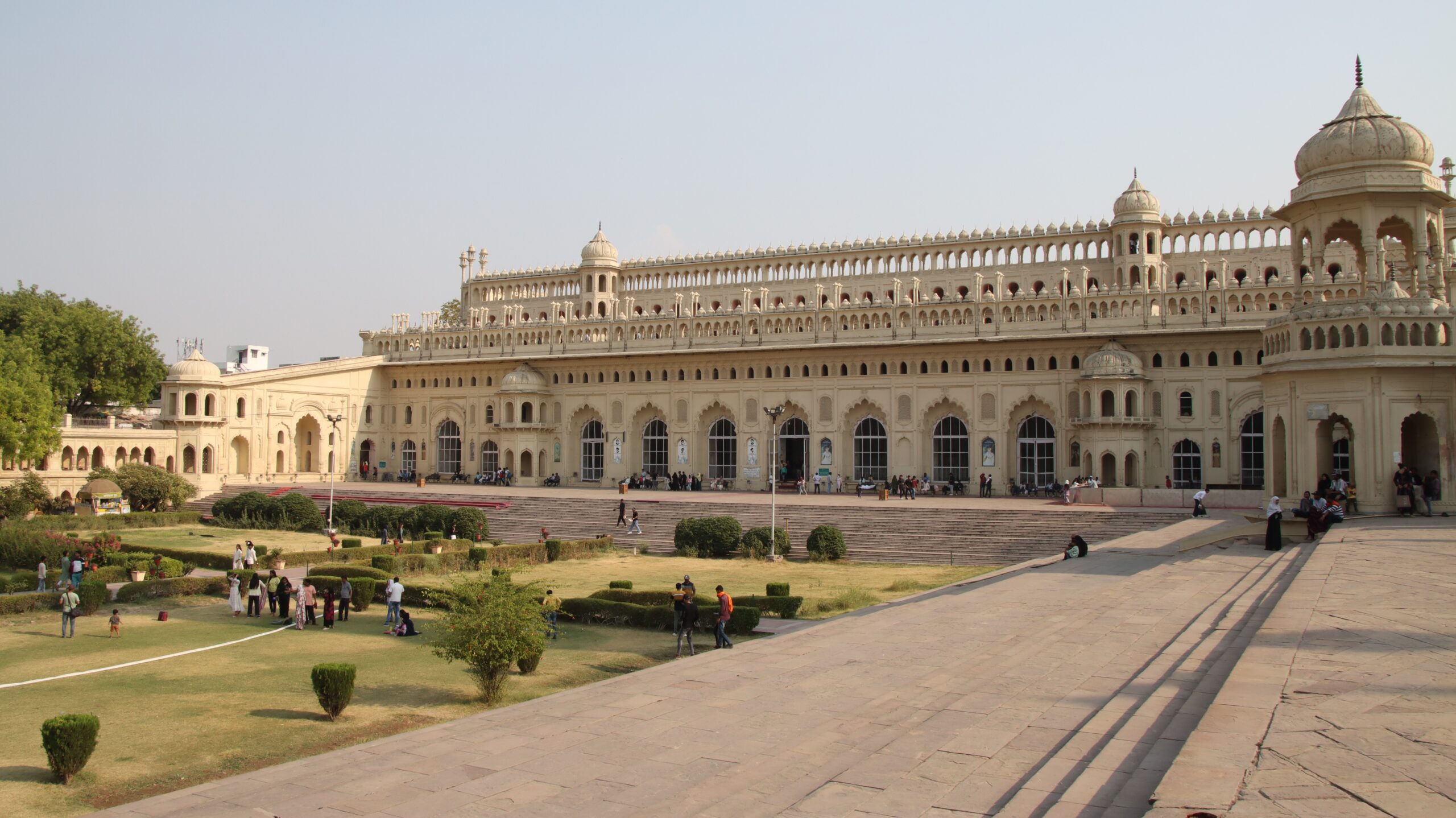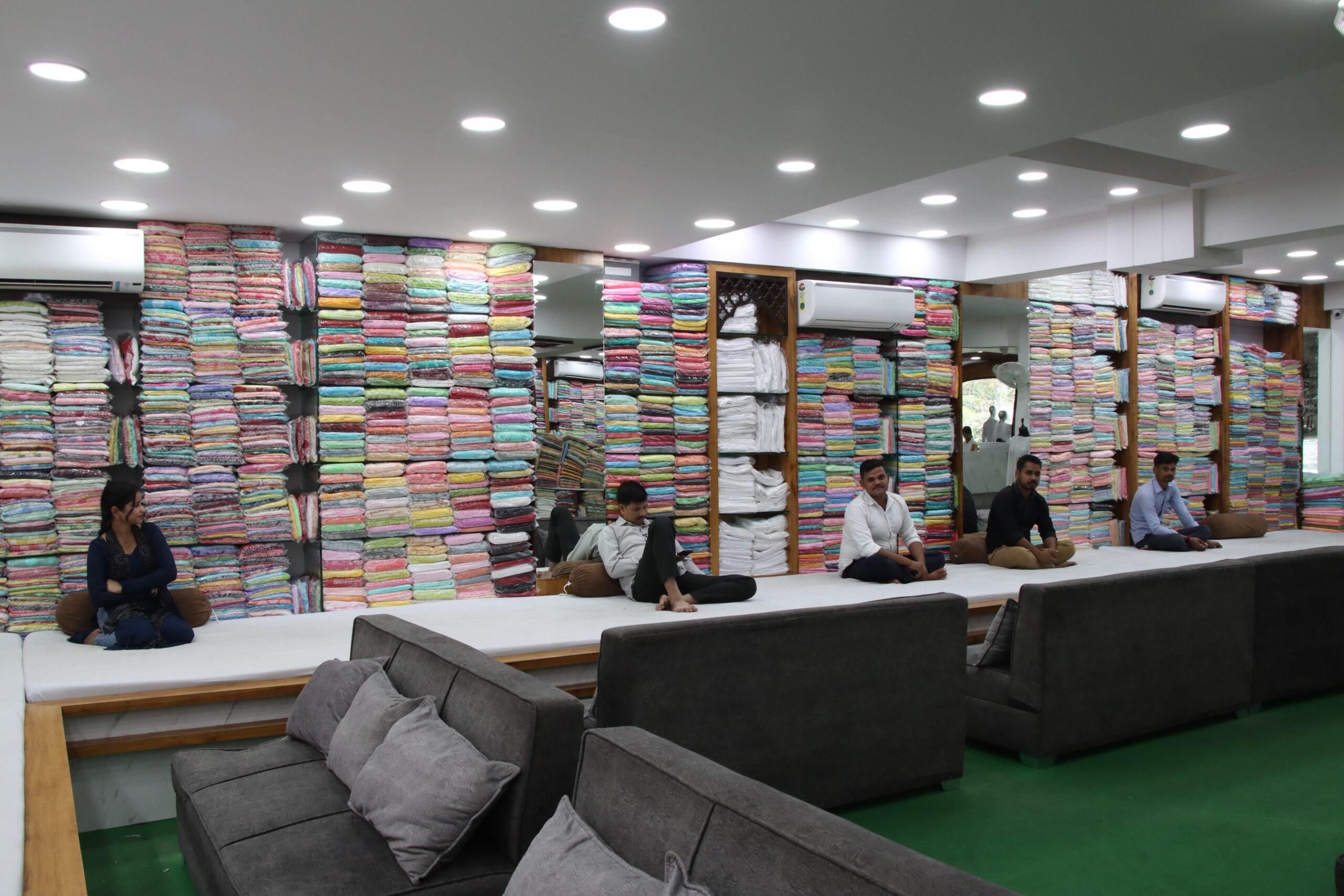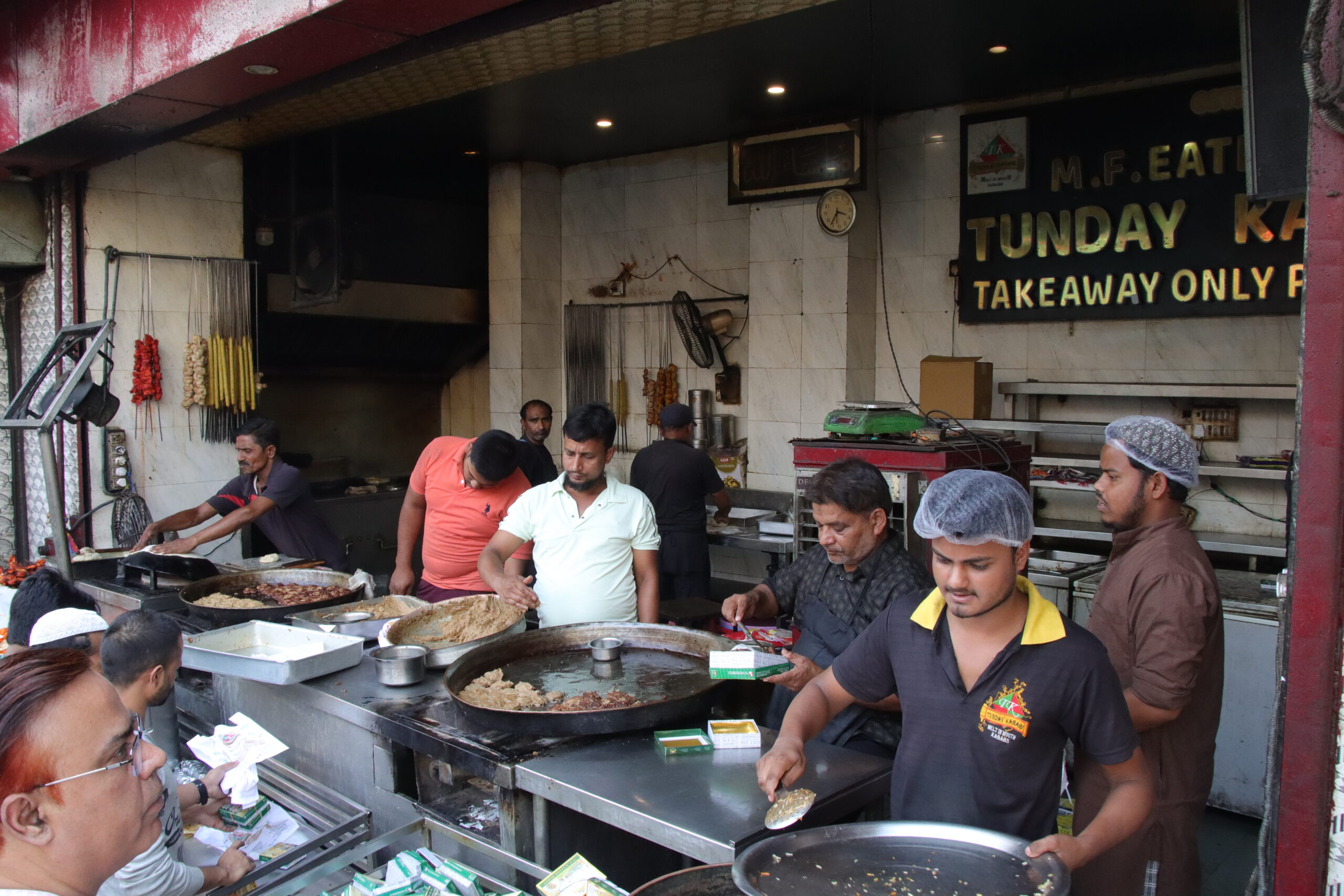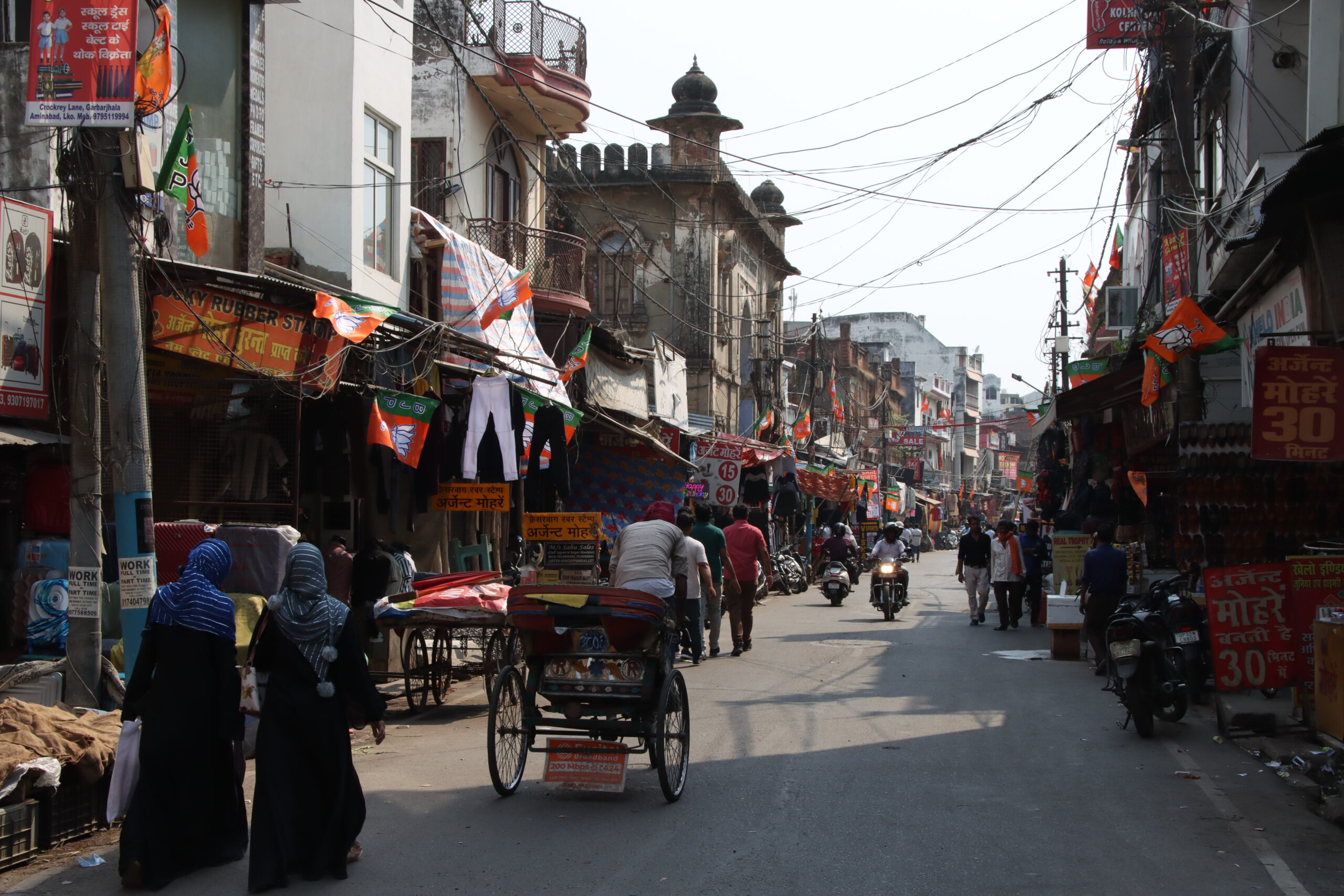Located on the major highways linking the capital of New Delhi to the tourist centers of Varanasi and Agra, Lucknow is probably the least visited major city in Uttar Pradesh, but as the state capital, it is by any metric worthy of at least a brief stopover on a journey through the north.
Lucknow is one of the wealthiest cities in the relatively poor region of the Gangetic Plain, and consistently ranks as having the second or third most happy and contented citizenry. Its recent history is defined by the control of the Persian-Afghan Nawabs, a group of Islamic rulers who held power well into the days of the British Raj.
Their architecture dominates the city’s historic districts, some of it fantastically preserved, and some of it thoroughly consumed by the fast-growing Indian economy. You don’t need to be interested in history or palaces to enjoy a day out in Lucknow, which can also be done without an extensively detailed plan.
All that’s required is a wad of cash (cards are broadly impossible to use) and a tolerance for heat that regularly climbs above 40°C.
Getting into the city
Charbagh Railway Station is the main point of entry for visitors to Lucknow, which is also read on the IRCTC website as “Lucknow NE”. This gorgeous building was built during British rule based on the styling seen in the Nawabs’ palatial Shi’ite architecture.
Lucknow is not like Agra or Varanasi; it’s a true metropolis. Certain neighborhoods will mean a 30-minute drive from the railway station, so don’t feel like it’s a waste wading through the rickshaw drivers to find a proper taxi.
Location comes down to a choice of how you want your day to end. It only makes sense to stay in the newer, posh areas or right in the heart of the historic district. The former means quieter, cleaner streets lined with new, modern restaurants underneath high-rise hotels and apartments, while the latter means classic India: dusty, colorful, noisy, full of street food vendors, and probably power outages in the hotels.
The advantages of the former are that you might actually find a real coffee shop, and have a quiet and comfortable place to lay your head at the end of an Indian day, while the latter’s greatest advantage is that you will be quite close to the majority of the sights, sounds, and smells.

Morning — Picking when to sweat
Working under the assumption that most visitors will have the energy for no more than about three activities under the intense heat that peaks quite early in the day and doesn’t depart until just before sundown, a morning excursion should include either Bada Imambara or Aminabad Market.
Bada Imambara is a gigantic mass of Indo-Islamic Shi’ite architecture that includes a double gate, curtain wall, grand mosque, palace, and well complex that housed the ruling Nawabs of the city. It’s a fantastic monument, and notable as one of the only places where white Westerners can see a Shi’ite holy place without going to Iran, Iraq, or Syria, where most will probably not want to visit.
Visitors can buy a ticket for just the main complex for something like 50 rupees—mere cents on the dollar. The only interior spaces one can visit are the dozens of dark, vaulted corridors that transverse the walls of the palace like those of an ant colony, for which a tour guide is mandatory. Most don’t speak English, but at least one of the chatty Indian tourists will help you understand what the guides are saying, including a big lie about how the palace was built with millets and curd—perfect nonsense.
– Group tours start at 180-200 rupees per person ($2.50)

IF YOU LIKE MORE MONUMENTS: Down the street, looking to the left out of the main gate where the rickshaw drivers wait, is a long cobbled boulevard that will take you past much poorer preserved sections of the Nawab palatial city, including the Rumi Gate, portrait gallery building, Islamic street arches, a smaller palace that’s falling more or less to pieces, and dozens of historic buildings that are all slowly being consumed by modern India.
But the most impressive monuments beyond Bada Imambara are the British clock tower—the tallest in India and built in wonderful concert with the palace style itself, and the Jama Masjid, or Jama Mosque. The mosque marks the end of the historic monuments and is a 25-minute walk from the Bada Imambara.
The other option is Aminabad Market but it’s worth considering two things. First, many shops won’t be open early in the morning, and second, street markets are often the most lively and exciting after dark. Here it’s only necessary for one to be a bit flexible and place the order of destinations in one that suits the traveler’s taste, but exploring Aminabad is great for the lunchtime food options. More on that later.
Aminabad Market is not a singular address like the hawker centers in Singapore. Instead, it’s just a large number of streets all in the same postal code grouped together by products sold. There is a special kind of handworked embroidery done here called ‘Chiken Wok,’ that specializes in women’s blouses and dresses, men’s tunics, and scarves. WaL confirmed that while many merchants say embroidered men’s trousers are unavailable anywhere, some shops will sell them. Some shops even accept international credit and debit cards. To find the area where the Chiken Wok shops are, it’s enough to tell a rickshaw driver “Chiken Wok Chowk” or “Chiken Wok Market”.
IF YOU LIKE SHOPPING: There is also a shoe market that is better than anything one might hope to find in North Africa, with all kinds of shoes, modern, traditional, sandals, sport, and leather products for barter. On that note, good market practice is to survey prices on offer from a couple of stores before committing to negotiate prices with one in particular. We’re talking about a 4-5$ difference maximum between shoe prices though, so don’t feel pressured to barter if you aren’t comfortable doing so.

Lunch — The world’s most unique kebab
Whether one is looking to eat before exploring the market, or after having finished and in preparation to go see the monuments, there is something non-veg that is so unique to eat in the bowels of Aminabad.
Tunday Kababi is a piece of Indo-Islamic history and by far the most unorthodox kebab you’ll ever eat. The story has it that once upon a time, several of the Nawab rulers lived long enough so that their successors always took power in their later years. Because of this gerontocracy, one Nawab tasked a city kebab vendor to find a way to serve kebab so that it could be chewed with one’s lips alone.
To this end, Tunday has been succeeding for generations, and their modestly priced, no-fuss kebab, eaten with paratha bread is exquisite, and when not sizzling hot can definitely be eaten with one’s lips. For vegetarian diners, there is a veg biryani made in a big black cauldron right next to the kebab, and is also delicious.
– Lunch for two: 680 rupees ($9.00 – 10.00)


IF YOU LIKE TRADITIONAL ATTRACTIONS: There is a convenient aspect of Lucknow for those with children or who enjoy traditional attractions in that the Lucknow Zoo also contains the Uttar Pradesh State Museum. Lucknow was extremely active during the Indian independence movement, and this museum devotes numerous rooms to detailing that legacy.
Evening/Night — Dr. Ambedkar Park/UP Darshan Park
Lucknow has several city parks that are perfect to explore after the heat of the day abates. The first is Dr. Babasaheb Ambedkar Memorial Park—dedicated to the author of the Indian Constitution and easily the second-most august figure in the birth of the Indian state.
Constitutions all over the world purport to provide equal protection under the law, but arguably nowhere is this more needed or held in higher esteem by those who agree with the document’s principles than in India, divided as she is between 6 major religions, dozens of languages, hundreds of tribes and ethnic groups, and the Hindu social caste system.
Mahatma Gandhi and Dr. Ambedkar did not see eye to eye on this issue, and for that reason, the massive secular temple located in the park is dedicated to the greatest of India’s sons and daughters who fought against ‘Bramhinism’ or the privileged rule by the highest Hindu caste. Inside, colossal statues honor not only modern figures like Ambedkar who took up this struggle, but Lord Buddha as well.

Above all, the park, sculpted almost completely in marble, tile, and sandstone, is beautiful to behold, especially after dark bathed in blue and yellow lights.
The river Gomti passes by the UP Darshan Park, just across the highway from Ambedkar Park. Along with boat rides and picnicking areas, there are sculptures and buildings created artistically with waste to inspire the ravenous Indian consumer to think more about recycling. These include sculptures of animals and people, and even a replica of the Taj Mahal, which, along with 15 other replica monuments, are rendered entirely in recycled waste.
Both these parks are perfect places to walk off a massive Indian dinner, and many posh modern restaurants can be found just across the Gomti around the bases of the high-rise hotels in neighborhoods like Gomti Nagar and Vijaipur Colony.
IF YOU WANT LANGAR: If you don’t know what Langar is, it’s the holy meal fed to anyone who walks inside of a Gurudwara, or Sikh temple. It can be intimidating to enter a Gurudwara without firm knowledge of Sikh practice, but there are some basic rules that will probably win you a welcome among them.
The first is wear a head covering: if you’re a man, a bandana is enough, but a turban is better. If you’re a lady, any sort of scarf is okay, worn in the same manner that one will have seen Hindu women employing when they wear scarves over their heads. When you enter a Gurudwara, you need to take off your shoes. Typically near the entrance, there will be a cloakroom for shoes where you can deposit them. Before you go any further, look for a place to wash your feet—this is typically done in a marble trough. Then you can clasp your hands and bow before the sanctum’s centerpiece, which looks like a small bed clad in gold.
Formalities completed, you can ask “Langar” and see if they are holding the feast that night. WaL can confirm that typically, the Yahiyaganj Gurudwara has Langar on Thursday nights at 9:00 p.m., but there are other Gurudwaras around the city, and if you pass one it’s worth sticking your head in to ask. WaL
We Humbly Ask For Your Support—Follow the link here to see all the ways, monetary and non-monetary.


